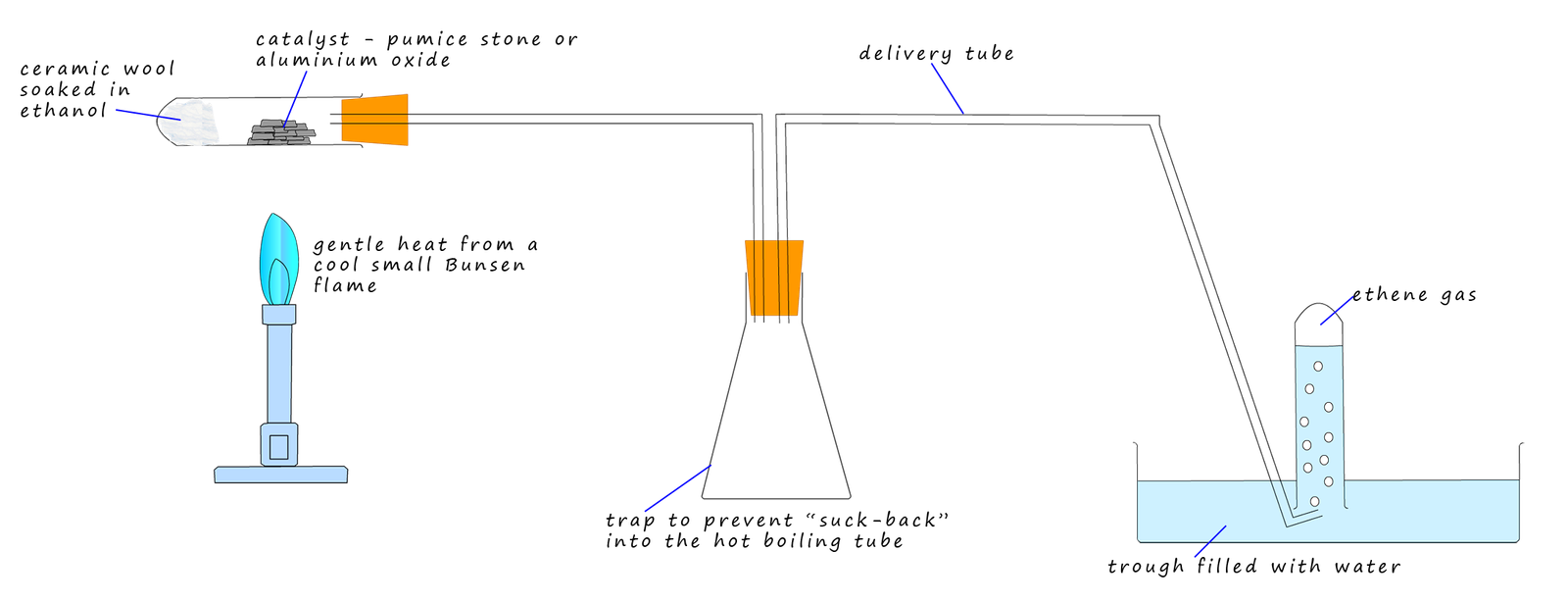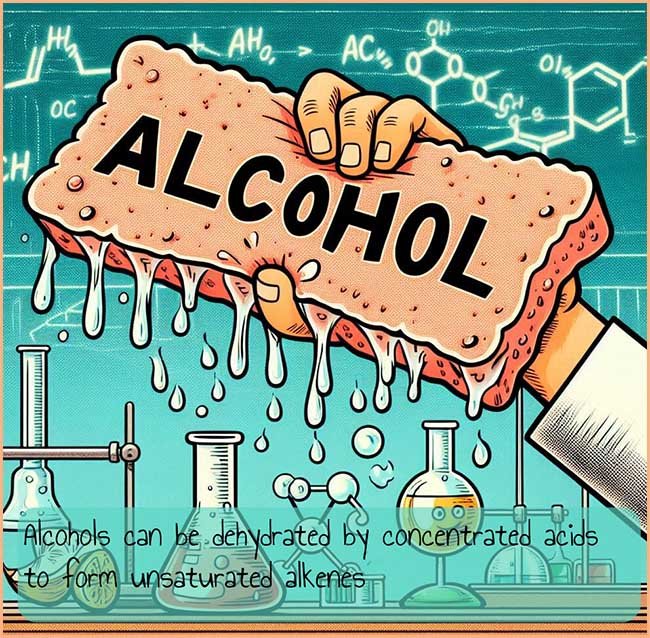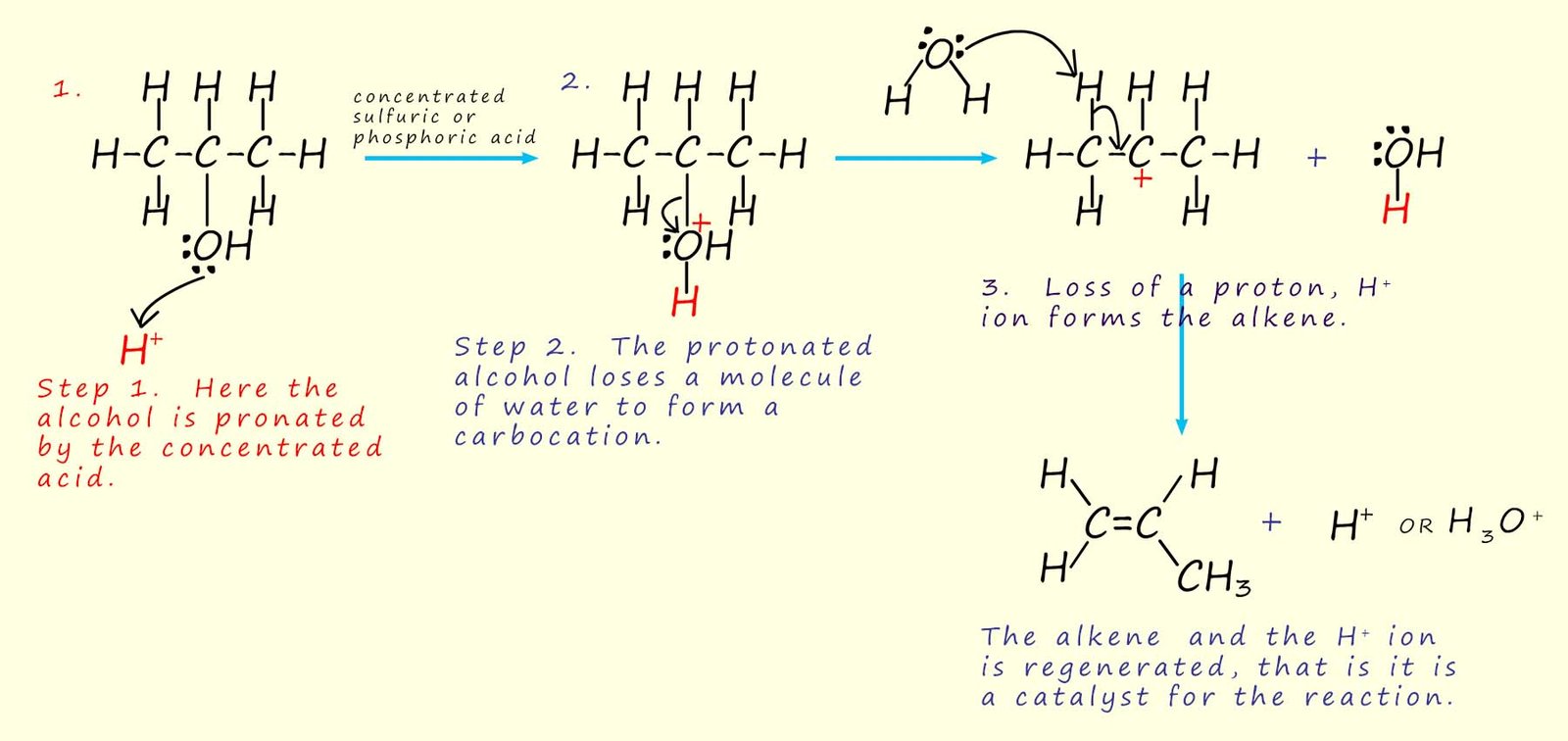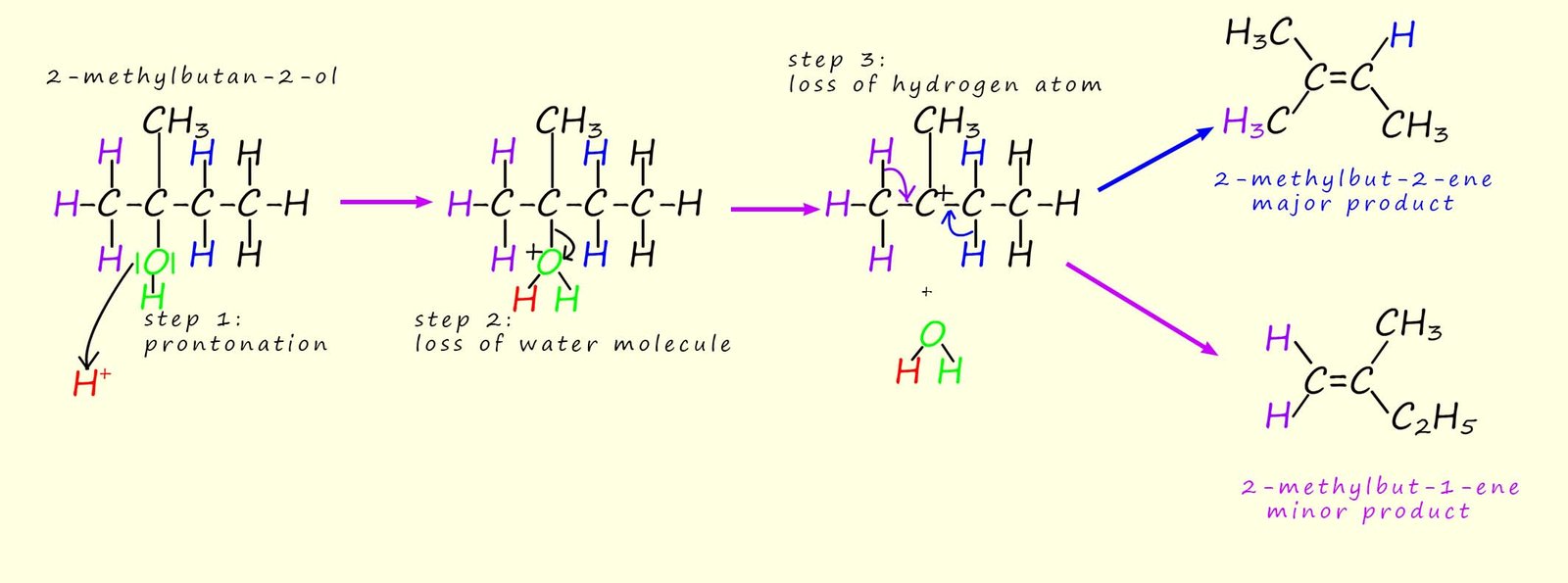

In class you may have dehydrated an alcohol using the apparatus shown below; here the alcohol ethanol is soaked into to ceramic wool which is packed tightly into the bottom of a boiling tube. A catalyst of pumice stone or aluminium oxide can be used to speed up this dehydration reaction or elimination reaction. To dehydrate the alcohol simply heat the catalyst using a gentle heating flame from a Bunsen burner then pass the flame over the ethanol soaked wool, this heat will vaporise the ethanol and as it passes over the hot catalyst it will be dehydrated to form the unsaturated alkene ethene. Ethene is insoluble in water and so it can be collected in a boiling tube filled with water which is held over a trough filled with water; as shown in the image below.

We can show this dehydration reaction as:

One of the most useful elimination reactions for producing alkenes is the acid catalysed dehydration of alcohols using concentrated phosphoric or sulfuric acids. Phosphoric acid is the better reagent to use here as it is not an oxidising acid like sulfuric acid and this leads to fewer unwanted side reactions. This dehydration reaction results in the formation of alkenes, these unsaturated alkenes can then be used to produce a wide range of addition polymers without the need to rely on any fossils fuels as a potential source of these unsaturated molecules. This method of alkene production is therefore more sustainable than simply sourcing alkenes molecules from fossil fuels, as alcohols can be derived from renewable resources like biomass, reducing dependence on non-renewable hydrocarbons and so lowering the environmental impact.
The mechanism of the acid catalysed dehydration of an alcohol can be thought as occurring in three steps:

This acid catalysed dehydration of an alcohol works best with tertiary alcohols. Secondary alcohols can be dehydrated with acids but harsher conditions are required and primary alcohols are the slowest to react with high temperatures and the use of acids with high concentrations are both required to dehydrate a primary alcohol. The reasons for this should be familiar to you, the reaction mechanism takes place through a carbocation intermediate and if you recall tertiary carbocations are more stable than secondary carbocation ions which are more stable than primary carbocations. This basically means that more energy is required to get a primary carbocation to form than is required to get a tertiary carbocation to form, that is the reaction has a higher activation energy.
In the example given above the alcohol propan-2-ol was dehydrated, now this
alcohol molecule is symmetrical and the dehydration
of it can lead to the formation of only one product- the alkene propene. However in the example below the unsymmetrical
tertiary alcohol
2-methylbutan-2-ol is dehydrated. This time there is more than one possible product. If you study the mechanism
shown below
you will see that at step 3, the loss of a proton or
hydrogen ion (H+) there are two possibilities.
Loss
of one of the
purple coloured hydrogen atoms or one of the blue coloured hydrogen atoms will lead to two different products. These two
products will not be formed in equal amounts. Zaitsev's rule can be used to predict which product will be the major one
and which the minor one. Zaitsev's rule basically says that the more substituted the
alkene the more stable it will be.
So here we have a di- and a tri-substituted alkene molecule as the two possible products, so according to Zaitsev's rule the major product will be the
trisubstituted alkene. This is outlined below:

The acid catalysed dehydration of 2-methylbutan-2-ol will produce 2 products. In step 3 in the image above a hydrogen atom adjacent to the carbocation will be lost, here there are two possibilities, any of the purple hydrogen atoms or the blue hydrogen atoms can be lost, as shown above. Using Zaitsev’s rule we can say that the more substituted the alkene the more stable it will be. So we can see that the alkene product 2-methylbut-2-ene is a trisubstituted alkene with only one hydrogen atom attached to the carbon atoms in the C=C whereas the other product, 2-methylbut-1-ene is a disubstituted alkene. So the major product will be the 2-methylbut-2-ene.
You should take care with the products of these dehydration or elimination reactions, often the products will shown geometric (E/Z) isomerism and its a favourite exam question to name the three products of a dehydration reaction, just remember that 2 will be the E/Z isomers.